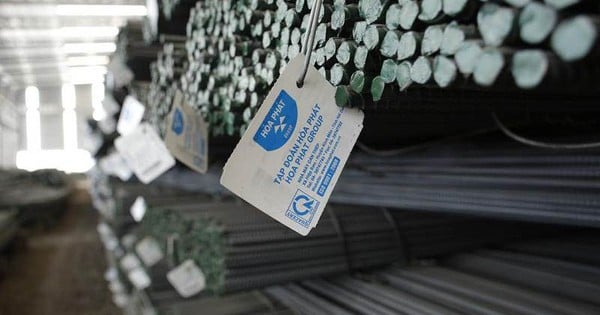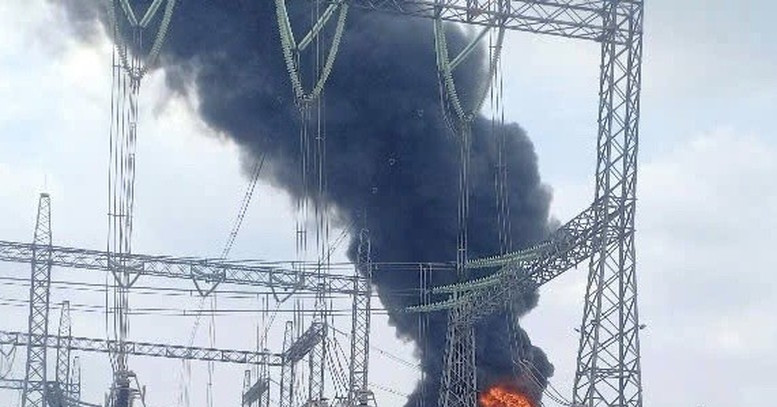Any steel grade can be made, as long as there is demand?
VietNamNet continues to record the opinions of many businesses related to the statement "Vietnam can only make screws for car license plates" by the Chairman of the Association of Supporting Industries.
However, it is worth mentioning that leaders of both steel and mechanical industries sympathize with this opinion.
"We understand that the underlying point of this statement is the weakness of the materials industry. And it is true that in reality, if we want to manufacture mechanical components for export, we, like many domestic enterprises, have to import steel from abroad because we cannot produce it domestically. However, that does not mean that the domestic steel industry cannot do it. It is just a matter of what price we can do it at. That means if they can do it but the cost is high, we will not buy it, and if few people buy it, they will not do it either," said Mr. Nguyen Thao - Sales Director of Aviation Technical Services Joint Stock Company (AESC).
AESC is currently a rare Vietnamese enterprise approved by the European Aviation Safety Agency to manufacture aviation equipment. In addition to supplying fire-resistant plastic equipment for aircraft, the company is also exporting steel barriers - an important component in aircraft wheels to an American enterprise so that this partner can put them into the supply chain of aviation corporations. However, the input materials are also imported by the unit because they are not yet supplied domestically.
Talking to VietNamNet , Mr. Nguyen Dinh Phuc, Vice Chairman of the Board of Directors of Vietnam Steel Corporation, said that if we want to make a screw to fit on a car wheel running on the highway or steel to make a bridge, domestic steel materials are not available.
"However, it is not that domestic steel units cannot do it, but that they do it less effectively than construction steel production. Because when deciding to make a product, market capacity, which leads to new costs, is the most important issue," said Mr. Phuc.

Mr. Nghiem Xuan Da, Chairman of the Vietnam Steel Association, affirmed that technically, Vietnam is completely capable of producing fabricated steel products. However, the market capacity is too small to encourage businesses to invest in making these products. "For materials for auto parts, Thailand or Indonesia produce millions of cars each year, so they can produce fabricated steel. Meanwhile, Vietnam only produces a few hundred thousand cars each year, so it is not enough for businesses to invest in producing fabricated steel," Mr. Da said, while informing that Formosa still produces a certain amount of fabricated steel each year, but for export.
A representative of Hoa Phat Group said that in 2022, Hoa Phat Dung Quat Steel Factory researched and produced high-carbon steel grades to make car tire beading with quality equivalent to that of developed steel industrial countries and competitive prices.
Car tire bead is a metal bar detail that helps clamp the tire firmly to the rim, shaping the entire tire and preventing air from escaping. The demand for steel coils for car tire bead production is increasing but mainly depends on imports, no domestic enterprise has produced it yet.
After the success in producing rolled steel for car tire beading, in early 2023, Hoa Phat Dung Quat Steel continued to test and successfully produce rolled ribbed steel bars to make concrete reinforcement for mega projects, made in roll form for convenient transportation.

Foundation for industrialization
According to the assessment of the Ministry of Industry and Trade, the supporting industry has not developed yet, so the added value of the industry is not high. Currently, the supporting industry only meets about 10% of the domestic demand for supporting industrial products with the main products being simple components and details, with low value in the product value structure.
The localization rate of most industries is low. This makes domestic processing and manufacturing industries heavily dependent on imported raw materials, intermediate products, and production machinery and equipment, making domestic production activities lack autonomy and vulnerable to political, economic, and social fluctuations in the world and in the region (the recent severe impact of the Covid-19 pandemic on the manufacturing sector is an example).
Every year, Vietnam imports tens of billions of dollars worth of raw materials from abroad for export, not to mention billions of dollars worth of machinery of all kinds. If this "huge" amount of money is converted into "made in Vietnam" products, the value it brings to the economy and jobs will be enormous.
The mindset of importing for "fast and cheap" is not wrong, but it limits the development of domestic industries, especially those in which Vietnam has the human and material resources to implement.

A former leader of the Vietnam Engine and Agricultural Machinery Corporation said: The measure of a country's industrial development is not only how much GDP it creates or how much it contributes to GDP, but more importantly, how many industrial products the country produces for the country.
Developed countries all have developed metallurgical and manufacturing industries. In industrialized countries, whether they are long-established or emerging, over the past 20 years, the manufacturing industry has always contributed about 20% to GDP.
Statistics from the Ministry of Industry and Trade show that in 2019, China's manufacturing sector accounted for 27.1% of GDP, South Korea 25.3%, Thailand 25.3%, Malaysia 21.5%, Japan 20.7%, Singapore 19.8%, and Germany 19.4%.
The Ministry of Industry and Trade believes that with an economy of about 100 million people, a young population structure, high employment demand, and nearly 70% of the population still living in rural areas, if the economy wants to be independent, self-reliant, and prosperous, it must have a strong manufacturing and processing industry so that the country's modernization and urbanization process can take place quickly and sustainably.
“The growth of the manufacturing sector and processing and manufacturing industries will create a shift attracting labor out of rural areas, converting labor from agriculture to industry and services, creating conditions for agricultural land accumulation and applying science and technology to increase added value and efficiency in the agricultural sector,” the Ministry of Industry and Trade oriented.
Obviously, in the current context of globalization, Vietnam does not need to produce all products from start to finish. However, for key industrial products with strengths such as electronics, textiles, footwear, etc., Vietnam needs to invest in materials and supporting industries. Then, the added value of products will be increased, and there will be more self-sufficiency in the supply of raw materials, thereby helping to attract many foreign corporations to set up factories.
At a press conference to provide information about the Auto Parts and Service Industry Exhibition (Automechanika 2023) held on February 21 in Hanoi, Associate Professor, Dr. Phan Dang Tuat, Chairman of the Vietnam Association of Supporting Industries, said: "A car today has more than 20,000 components, requiring more than 200 metal codes (steel codes). Currently, businesses in Vietnam cannot manufacture any of those 200 metal codes. We can only make the screw that holds the license plate."
Source



























































Comment (0)